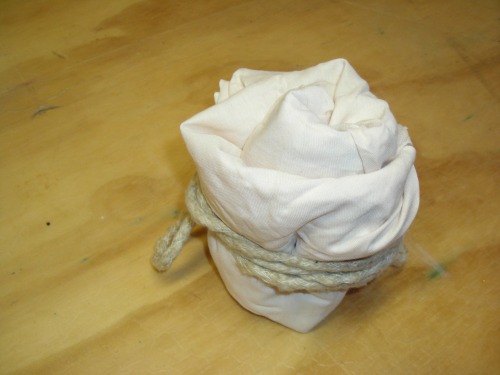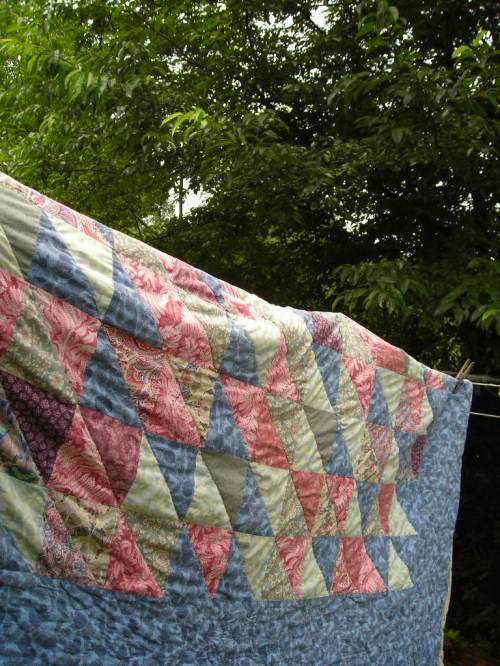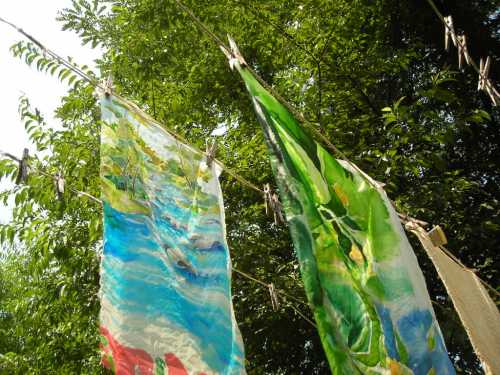So I have recently purchased two new Dupont colors- and a new water based resist. Not only are the Dupont dyes a challenge to order at the moment, the water based resist that I LOVE is not currently available. Inspired by how much my old color chart helped me make sense of my studio possibilities, I decided to do a side-by side comparison with colors and resists.

First, let’s do the colors.
I concluded right away that Myrthe # 610 won’t be a favorite. Look at the first leaf shape on the left to see it. Much too minty-green, it seems to stand out from my usual palette like a sore thumb. Still, I had not yet paired it side by side with many of my other green dyes. Now I see that it is vivid, but such a cool green. Still not a favorite.
Citron # 626, new for me, goes head to head with Helianthe, my big favorite. The middle yellow leaf is Citron, the flanking ones are Helianthe. Citron is slightly paler, and cooler. Yet the intensity is holding its own against Helianthe. A very pretty shade. Not bad!
Now for the resists.
Wow, I do not have too much to say for Jacquard Water Based Resist. The leaves and linear work on the right portion are the Jacquard resist. The ones on the left half are made by Silkpaint resist. Both were in a squeeze bottle with a medium (.07mm, I think) applicator tip.
The Jacquard resist just cannot make a thin line, not much thinner than 1/8 inch , and is very hard to control. I let it dry until it was not transparent ( it continued to spread quite a bit) and then applied dye. It absorbed dye at all the edges, giving a furry look. Had I waited until the next day, I am sure the resist would have been sturdier. But I do not time my work that way.
In some places, like the lower right, the dye completely absorbed and broke through. This may not be a completely bad thing- it does give a very pretty layering effect, and looks very much like crackle batik. But the Jacquard resist usefulness is very limited.
The Silkpaint brand resist line is very thin, though I could control the flow by squeezing the bottle, and get a thicker line. I waited only a few minutes after applying the resist to dye, and the resist did hold a sturdy line against the dye. In places, it did absorb the dye, though not as much as the Jacquard resist.
As far as rinsing the resist away after steaming, both resists washed away easily. I steamed the piece for 10 minutes in high heat and heavy steam, turned the setting to low heat with steady steam for 25 minutes, and then let it cool in the pot for 10 minutes. So the resist was exposed to high heat and a long steaming time, but with no ill effects whatsoever. Rinseability was fine.
I think I will use the Jacquard for broader effects, more splotchy and abstract, than what I usually try with resists. For linear work I want the Silkpaint resist! I hope it will become available soon!
 The steamer is gently steaming over medium heat- and now I put the lid on it and let it quietly steam.
The steamer is gently steaming over medium heat- and now I put the lid on it and let it quietly steam. 





















